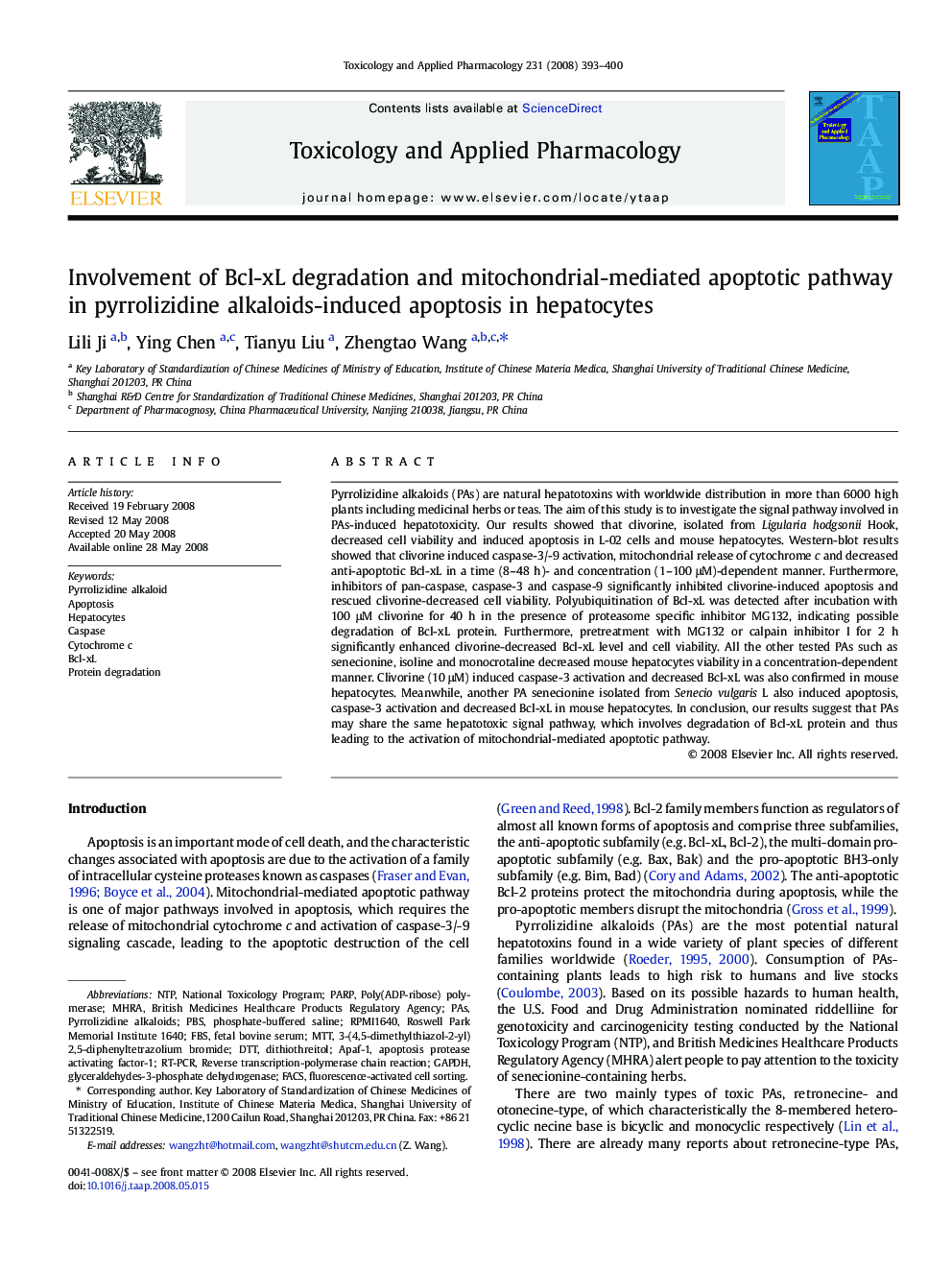| Article ID | Journal | Published Year | Pages | File Type |
|---|---|---|---|---|
| 2571090 | Toxicology and Applied Pharmacology | 2008 | 8 Pages |
Pyrrolizidine alkaloids (PAs) are natural hepatotoxins with worldwide distribution in more than 6000 high plants including medicinal herbs or teas. The aim of this study is to investigate the signal pathway involved in PAs-induced hepatotoxicity. Our results showed that clivorine, isolated from Ligularia hodgsonii Hook, decreased cell viability and induced apoptosis in L-02 cells and mouse hepatocytes. Western-blot results showed that clivorine induced caspase-3/-9 activation, mitochondrial release of cytochrome c and decreased anti-apoptotic Bcl-xL in a time (8–48 h)- and concentration (1–100 μM)-dependent manner. Furthermore, inhibitors of pan-caspase, caspase-3 and caspase-9 significantly inhibited clivorine-induced apoptosis and rescued clivorine-decreased cell viability. Polyubiquitination of Bcl-xL was detected after incubation with 100 μM clivorine for 40 h in the presence of proteasome specific inhibitor MG132, indicating possible degradation of Bcl-xL protein. Furthermore, pretreatment with MG132 or calpain inhibitor I for 2 h significantly enhanced clivorine-decreased Bcl-xL level and cell viability. All the other tested PAs such as senecionine, isoline and monocrotaline decreased mouse hepatocytes viability in a concentration-dependent manner. Clivorine (10 μM) induced caspase-3 activation and decreased Bcl-xL was also confirmed in mouse hepatocytes. Meanwhile, another PA senecionine isolated from Senecio vulgaris L also induced apoptosis, caspase-3 activation and decreased Bcl-xL in mouse hepatocytes. In conclusion, our results suggest that PAs may share the same hepatotoxic signal pathway, which involves degradation of Bcl-xL protein and thus leading to the activation of mitochondrial-mediated apoptotic pathway.
